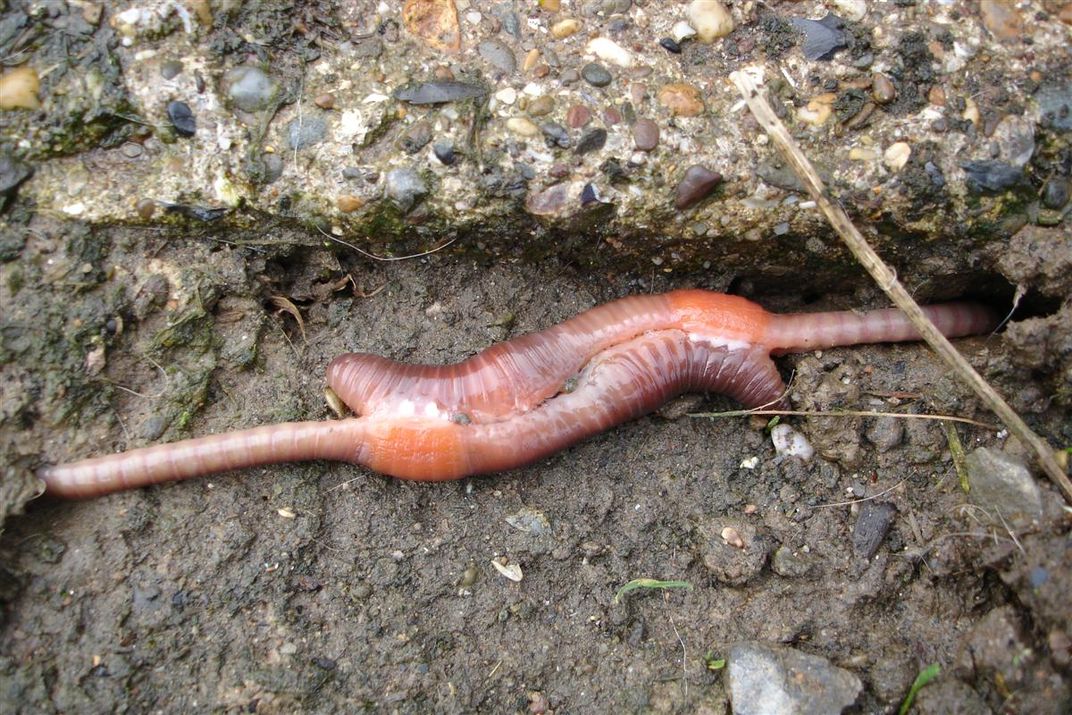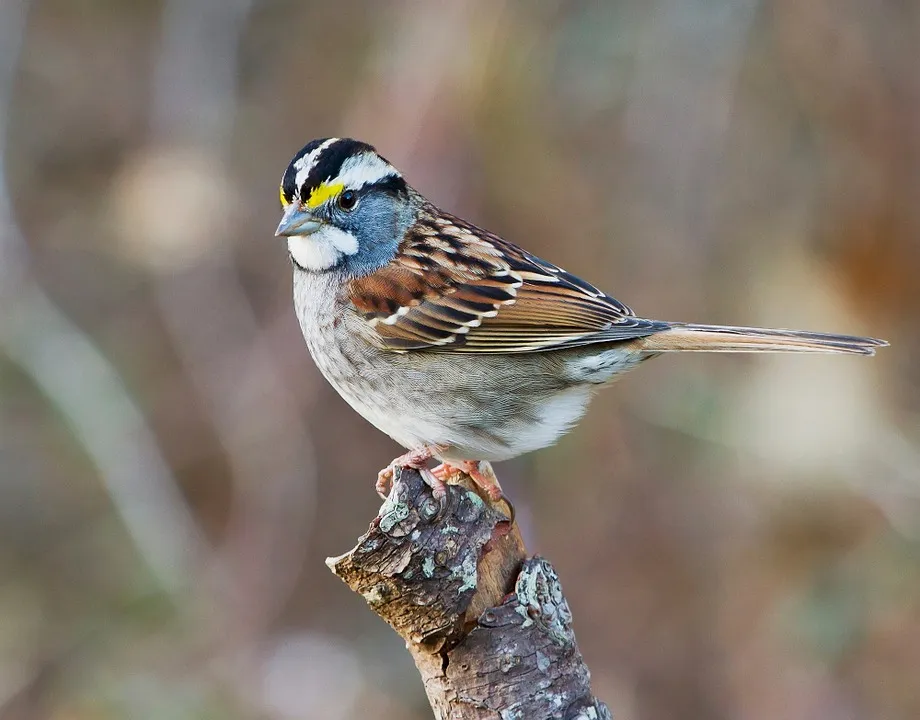Alternatives to Heterosexual Pairings, Brought to You By Non-Human Animals
No one quite has this sex thing figured out, but these non-binary animals have some good ideas
/https://tf-cmsv2-smithsonianmag-media.s3.amazonaws.com/filer/97/aa/97aa09f4-01ae-4fa2-95a4-4b3fb540e209/anemone_purple_anemonefish.jpg)
In Ursula K. Le Guin’s The Left Hand of Darkness, the humanoid inhabitants of the planet Gethen live most of their lives as androgynous, sexless beings. Once a month they enter an estrus-like state known as "kemmer," temporarily adopting the guise of either “male” or “female” with a sexual partner of their choosing. By contrast, interstellar visitors who enter with just one sexual identity, and in constant estrus, are initially considered perverted sexual deviants. The gender-fluid world Le Guin imagined—what she called a "thought experiment" in sexual politics—shattered barriers when it was released in 1969, and continues to make waves today.
But it’s not as far outside the realm of possibility as it may seem—if you know where to look. For much of human history, heterosexual pairings may have been considered the norm, but for the rest of the animal kingdom, they’re anything but. From male clownfish that ascend to female status, to sparrows that exist in four sexes, to trisexual nematodes who can reproduce either in pairs or alone, myriad non-human animal species exist outside the restrictive constraints of a two-sex binary.
Here are just a few examples, brought to you by Mother Nature.
Three’s company
First, let's define our terms: Sex usually refers to biological characteristics, including chromosomes, hormones, and internal and external anatomy. Gender, by contrast, is about one's internal psychological experience and the way they express themselves in society. When we talk about non-human animals, we aren't talking about gender expression or an inner sense of identity, but about diversity in reproductive strategies and sex roles.
That being said, one of the most common sexual configurations in non-human animals is hermaphroditism: when an individual displays both male and female reproductive organs. And for many animals—being much more creative than us—it's possible to have both these sets of organs either at once, or over a lifetime.
The advantages of simultaneous hermaphroditism might seem obvious. If you can reproduce sans partner, you can say goodbye to the stress of finding a mate—and in species without Tinder, or that live mostly in solitude, this can be a big weight off one’s shoulders. This is the case in trioecious nematodes, a type of roundworm with three sexes: male, female and hermaphrodite. The hermaphrodites, which produce both eggs and sperm at once, are the true solo act of the worm world.
Imagine an apocalyptic situation that leaves one single survivor—for other species, a road to inevitable extinction. For these nematodes, the situation is salvageable—because our (s)hero(ine) can self-fertilize. Now that's clever.

In general, though, hermaphrodites typically only self-fertilize as an act of desperation. Luckily, these trisexual nematodes have options aplenty: For them, three productive partnerships are possible, and different combinations yield strikingly different ratios of sexes in offspring. While in humans, male-female unions generally have a fifty-fifty shot of producing males or females, in these nematodes, coupling hermaphrodites with males will produce only male offspring. On the other hand, mating hermaphrodites to females or other hermaphrodites will yield offspring that are almost entirely females or hermaphrodites.
In this way, different pairings can heavily skew the sex balance in the population—which may be an advantageous move when the surrounding environment is constantly changing. Hermaphrodites, for instance, tend to appear more often under stress, when the population deems it appropriate to prepare for the worst.
“It’s a robust situation with a lot of bet hedging,” explains Diane Shakes, a biologist at The College of William and Mary who studies these nematodes. “These guys have it figured out.”
But what makes self-fertilization such a last resort? The reason has to do with the enormous upside of sex, specifically the genetic exchange that occurs during sexual reproduction. This exchange mixes the genes of both parents in the offspring, increasing diversity in the population as a whole. Self-fertilization, on the other hand, produces clones exclusively. If something comes around that is deadly for you, it will likely kill anything else with your exact genetic makeup … but non-clonal, hybrid offspring may be spared.
Which is why most simultaneously hermaphroditic species purposefully shy away from self-fertilization. Earthworms, which are all simultaneous hermaphrodites, have such a safeguard: their sexual organs are located at either end of their bodies, so that it’s near-impossible to accidentally self-fertilize. Two worms must sidle up alongside in each other in opposite orientations to mate, wherein they fertilize their partner with their male parts. Both worms will go on to lay eggs that have received genetic contributions from both parents. Self-fertilization, on the other hand, would require quite the feat of flexibility—something all the wriggling in the world wouldn’t accomplish.
Can’t wait to be queen
Other species exhibit a type of hermaphroditism that is sequential, rather than simultaneous. In other words, they will change biological sex at least once over the course of a lifetime.
Ocellaris clownfish exist in matriarchies headed by the largest and most aggressive member of the school, who rules as a female. She is attended by a male breeding partner, with whom she mates monogamously. Her charges are a small cohort of androgynous juveniles, who bear the immature reproductive tissues of both sexes. If the female at the top dies, she leaves a vacancy at the top of the strict clownfish hierarchy. To rectify the situation, her male consort will immediately undergo a series of neurological changes and begin to boss and court the smaller fish.
Within a matter of days, the new female will also begin to undergo some pretty stark physical transformations, growing rapidly in size as her testes recede back into her body. Yes, that's right: Like a pawn reaching the other end of a chess board, the former male consort queens up as the school’s newest female.
At the same time, the highest-ranking juvenile in the group begins to mature into a full male. But, according to Justin Rhodes, a biologist at the University of Illinois at Urbana-Champaign, these behavioral signs of being male and female can be misleading. A closer look at their gonads will reveal that both have reverted to a state of ambiguous genitalia—a sort of reproductive stasis. “Brain sex and gonadal sex are completely dissociated,” explains Rhodes.
Only when the two are ready to mate will ovaries and egg-laying machinery populate the female’s genital tract, while the male sprouts testes. Rhodes is not yet sure why these reversions occur, but theorizes that the commitment to becoming female may be irreversible—and thus a risk only worth taking when all conditions are exactly right.
Still other species begin life as a complete tabula rasa: in several reptiles, biological sex is determined not by genes, but by temperature, with warmer eggs hatching males and cooler eggs fated female (a phenomenon sometimes cheekily referred to as “hot dudes and cool chicks”). In alligators, exposure to heat during a sensitive period apparently jumpstarts a suite of genes that prompt male differentiation—but in the cold, offspring default to female.
Quad goals

Perhaps one of the most unusual reproductive systems, however, is that of the white-throated sparrow. These unassuming little birds come in just two sexes, male and female, but they also have two color categories: each sparrow has stripes above its eyes where eyebrows might otherwise be, and they can be white or tan. Color matters—immensely. So much so that each individual bird will only select a mate with the opposite sex and the opposite color.
White females will mate almost exclusively with tan males, and tan females almost exclusively with white males. This effectively creates four biological sex categories.
When researchers studied the genetic basis for these color differences, they found that white birds were carrying an enormous block of mutated genes, including ones coding for pigmentation. And this block of genes was continuing to evolve at a very rapid pace, mirroring what scientists believe is the process that created different sex chromosomes. Sex, down to the level of individual fragments of DNA, will continue to shift and settle into new patterns for as long as the world around us remains dynamic.
“There is fluidity,” says Shakes, the nematode biologist. “It’s not just ‘males’ and ‘females’... [it’s incorrect to think] that’s all there is and anything else is unnatural.” Humans, take note.
/https://tf-cmsv2-smithsonianmag-media.s3.amazonaws.com/accounts/headshot/10172852_10152012979290896_320129237_n.jpg)
/https://tf-cmsv2-smithsonianmag-media.s3.amazonaws.com/accounts/headshot/10172852_10152012979290896_320129237_n.jpg)